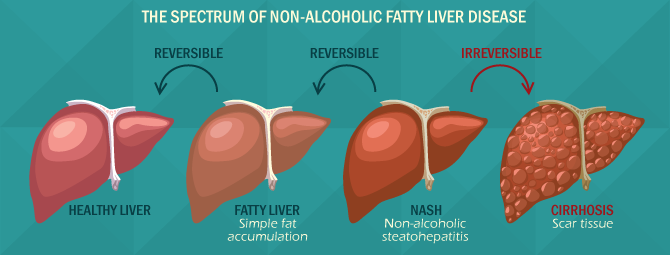With researchers from the Steno Center, Eytan Ruppin publishes article in Nature Communications on Non-Alcoholic Fatty Liver Disease
On February 3, 2016, Eytan Ruppin, Professor of Computer Science and Director of the Center for Bioinformatics and Computational Biology, published "Genome-scale study reveals reduced metabolic adaptability in patients with non-alcoholic fatty liver disease" in Nature Communications. He collaborated on this work with members of Steno Diabetes Center, Tel Aviv University, Institute of Clinical Physiology, CNR Pisa, Italy, and University of Helsinki.
The collaborators' work charts liver metabolic activity and functionality in NAFLD. Individuals with Non-alcocholic fatty liver disease (NAFLD) have a higher risk of developing chronic liver disease, Type-2 Diabetes, liver cancer and other obesity related cancers. According to work published by the Steno Research Center, 20-30% of the population in the Western world suffer from non-alcoholic fatty liver disease (NAFLD), and as obesity rates continue to climb, so will NAFLD. The paper in Nature Communications demonstrates that high liver fat (and the metabolic processes taking place in a fatty liver) decreases the liver's ability to function properly and to promote healthy metabolism.
In a press release from Steno Diabetes center, principal investigator Professor Matej Orešič explains that "[d]espite its importance, non-alcoholic fatty liver disease is poorly understood. Through a complicated procedure that includes catheter implants in the liver, liver biopsies, and comprehensive molecular profiling combined with sophisticated computational modelling of liver metabolism, we have mapped the metabolic processes in the fatty liver."
The findings from the study have helped the researchers to determine some of the markers of risk for NAFLD as well at the diseases associated with it, and most importantly, researchers may be able to prevent the diseases.

The abstract of the publication:
Non-alcoholic fatty liver disease (NAFLD) is a major risk factor leading to chronic liver disease and type 2 diabetes. Here we chart liver metabolic activity and functionality in NAFLD by integrating global transcriptomic data, from human liver biopsies, and metabolic flux data, measured across the human splanchnic vascular bed, within a genome-scale model of human metabolism. We show that an increased amount of liver fat induces mitochondrial metabolism, lipolysis, glyceroneogenesis and a switch from lactate to glycerol as substrate for gluconeogenesis, indicating an intricate balance of exacerbated opposite metabolic processes in glycemic regulation. These changes were associated with reduced metabolic adaptability on a network level in the sense that liver fat accumulation puts increasing demands on the liver to adaptively regulate metabolic responses to maintain basic liver functions. We propose that failure to meet excessive metabolic challenges coupled with reduced metabolic adaptability may lead to a vicious pathogenic cycle leading to the co-morbidities of NAFLD.
The Department welcomes comments, suggestions and corrections. Send email to editor [-at-] cs [dot] umd [dot] edu.
